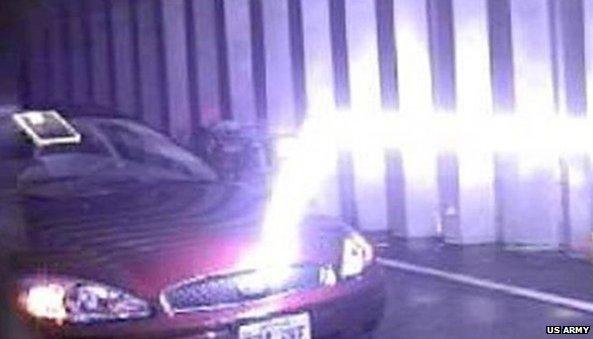Lightning laser weapon developed by US Army
- Published

The weapon is capable of emitting 'huge' power, researchers said
US Army scientists are developing a weapon which can fire a laser-guided lightning bolt at a target.
The Laser-Induced Plasma Channel (LIPC) is designed to hit targets that conduct electricity better than the air or ground that surrounds them.
The weapon went through extensive testing in January.
George Fischer, lead scientist on the project, said: "We never got tired of the lightning bolts zapping our simulated [targets]."
Details of the weapon were released on the US Army's website.
Mr Fischer explained how the usually unpredictable lightning bolts can be controlled.
"If a laser puts out a pulse with modest energy, but the time is incredibly tiny, the power can be huge," Mr Fischer said.
"During the duration of the laser pulse, it can be putting out more power than a large city needs, but the pulse only lasts for two-trillionths of a second."
50 billion watts
This means, Mr Fischer said, the air could be manipulated to "act like a lens".
"We use an ultra-short-pulse laser of modest energy to make a laser beam so intense that it focuses on itself in air and stays focused in a filament," he said.
Fifty billion watts of optical power are used. By comparison, a typical filament lightbulb uses 100 watts of power.
"If a laser beam is intense enough, its electro-magnetic field is strong enough to rip electrons off of air molecules, creating plasma," Mr Fischer said.
"This plasma is located along the path of the laser beam, so we can direct it wherever we want by moving a mirror."
The team said it faced a challenge in making the technology rugged enough to survive in harsh battle conditions.
- Published18 June 2012
- Published2 April 2012
- Published8 March 2012